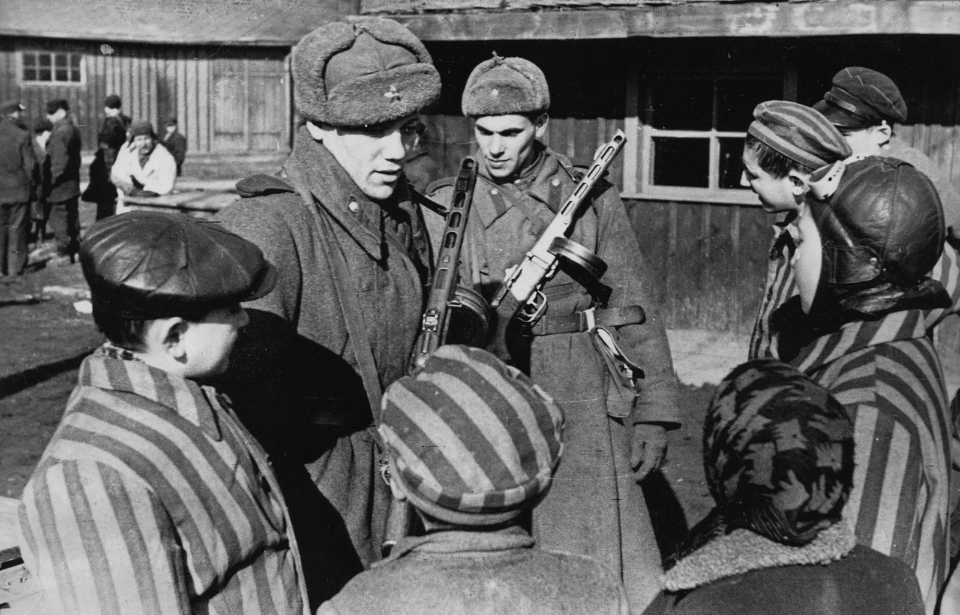The phrase arbeit macht frei – “work sets you free” – were emblazoned on the sign at the entrance of Auschwitz for prisoners to read daily. These three words and their placement became the most infamous identifiers of the concentration camp during the Second World War. It was also through this gate, below the metal sign, that the survivors of Auschwitz were led away following their liberation by the Red Army.
Construction of Auschwitz concentration camp
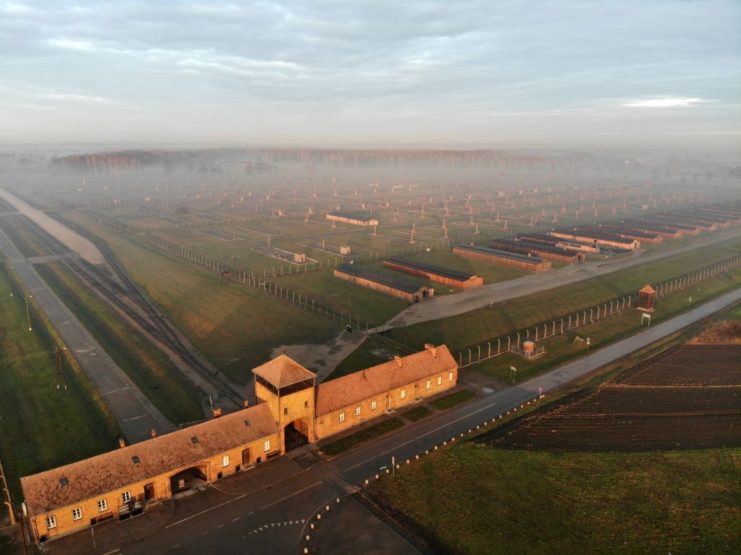
Although it’s generally referred to as Auschwitz, the complex actually consisted of a number of separate camps connected by a railway: Auschwitz I, Auschwitz II-Birkenau, Auschwitz III-Monowitz and a number of smaller sub-camps. The first prisoners were Polish political dissenters, with Jewish prisoners arriving en masse in 1942.
From then until 1944, the camp became the primary location where gas chambers were used to murder prisoners.
At the end of World War II, Auschwitz became synonymous with the Holocaust. It was – and still is – known more than other camps for the horrific treatment of prisoners, mass killings and harsh punishments. It was also the site of medical experiments conducted by the “Angel of Death,” Josef Mengele.
These factors, along with high levels of starvation, disease and exhaustion, killed most of those imprisoned there.
The Red Army pushes toward Auschwitz
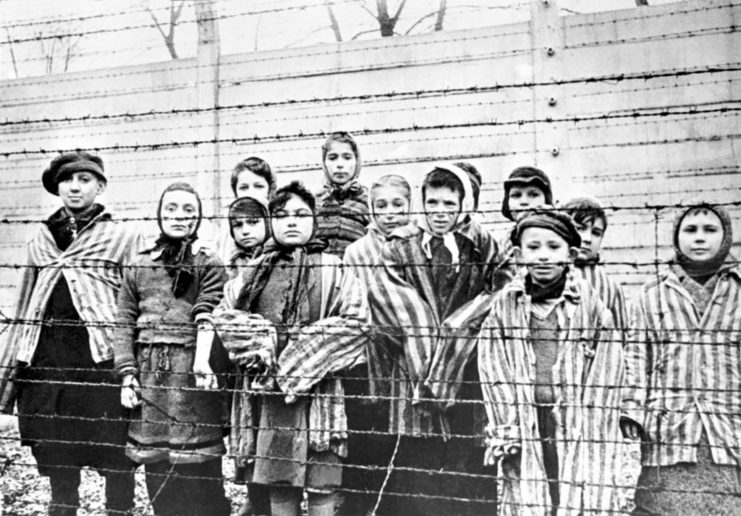
It was the Red Army that marched on Auschwitz at the beginning of 1945, after the tide turned in the Allies’ favor and it became apparent they were going to win the war. When the Germans realized they were moving toward the camp, the SS ordered that the surviving prisoners be sent to other locations in both Germany and Austria.
This was part of the effort to cover up the mass murders that were committed in the camps. While the Red Army marched toward Auschwitz, prisoners were marched away, with little to no food, protection from the cold or sense of direction. If anyone lagged or fell down, they were shot by the camp guards escorting them on these so-called death marches.
Removing the evidence
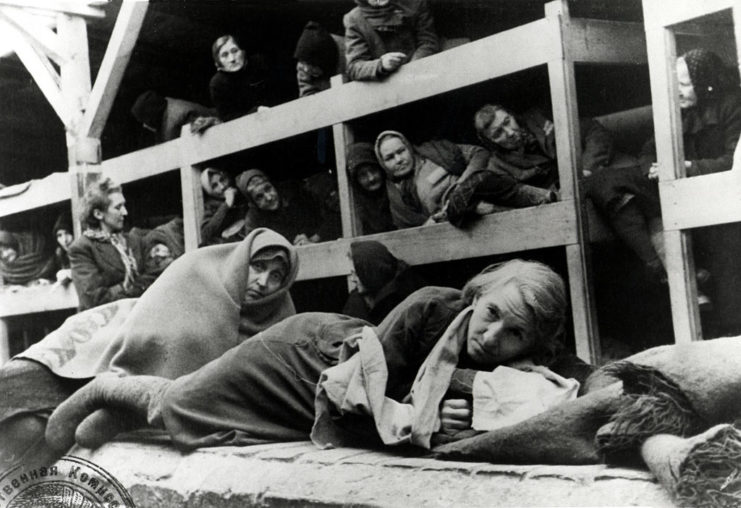
Their journey began, divided between walking and traveling in open-top cattle cars, on January 17, 1945, and included 56,000 people. Fifteen-thousand of them died. Less than 9,000 remained back at the complex, made up of those who were too sick to move. They were simply left behind to die, with no care and no one to look after them, except for the small number of prisoners who were slightly healthier than the rest.
Aside from the death march, the guards were tasked with getting rid of on-site evidence. Shortly before the Soviets arrived, the Germans blew up crematoriums II, III and V, before setting fire to Kanada II, the barracks holding most of the items that had been stolen from those facing the gas chambers. Important documents were simply piled onto paths and burned.
The Red Army arrives at Auschwitz
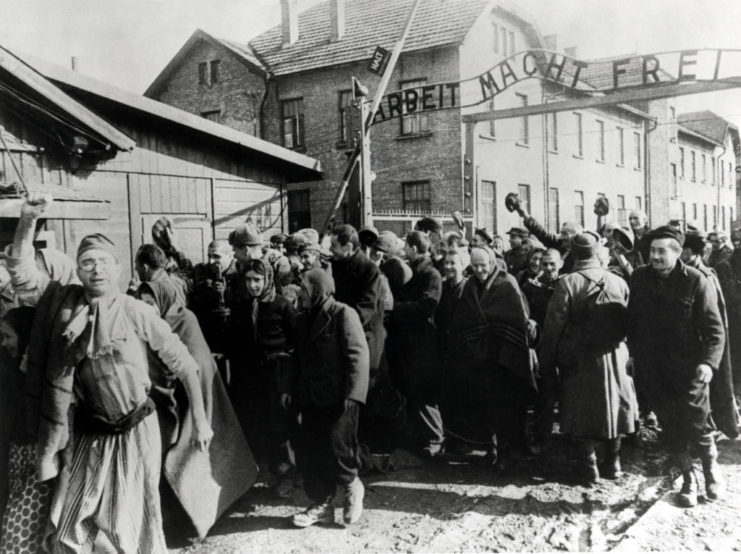
Although Joseph Stalin knew about the existence of Auschwitz, the Soviet forces who were in the area to take the nearby city of Katowice were none the wiser about its existence. In fact, a group of scouts stumbled upon it entirely by accident, expecting to encounter a force of Germans.
Auschwitz III-Monowitz was the first part to be liberated when a soldier with the 100th Rifle Division arrived early in the morning on January 27, followed by additional troops. The 60th Army, most notably the 322nd Rifle Division, liberated the other two major parts of the camp later that afternoon.
The soldiers were truly horrified by what they’d walked into, with survivor Primo Levi recalling, “They did not greet us, nor did they smile; they seemed oppressed not only by compassion but by a confused restraint, which sealed their lips and bound their eyes to the funeral scene.”
The living conditions were deplorable, with many soldiers recounting later in life that the scene they walked into would forever be burned into their minds: the sick, the dying, the dead. Many of the bodies were of the recently deceased, as the camp guards had killed thousands of would-be survivors shortly before the Soviets’ arrival.
Liberation of Auschwitz
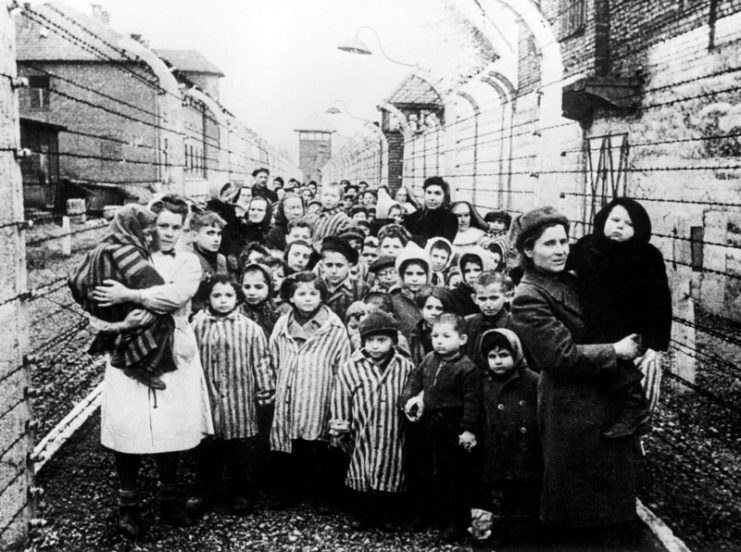
After acclimatizing to the scene, the Red Army announced to those who remained in each of the camps that they were free. Some of them were slow to accept the proclamation. Georgii Elisavetskii, another Soviet soldier who was there on that day, remembered conveying the message in numerous different languages, only for the survivors to draw away from him, as they thought he was provoking them.
Only when he said to them, “Do not be afraid, I am a colonel of Soviet Army and a Jew. We have come to liberate you,” did the elation set in for those around him. In other areas of Auschwitz, survivors were quicker to come around.
One of the children subjected to Mengele’s medical experiments, Eva Mozes Kor, was only 10 at the time of liberation. She later recalled the kindness the Soviets showed to the children. “They gave us hugs, cookies, and chocolate,” she said. “Being so alone a hug meant more than anybody could imagine because that replaced the human worth that we were starving for. We were not only starved for food but we were starved for human kindness. And the Soviet Army did provide some of that.”
Establishing medical care
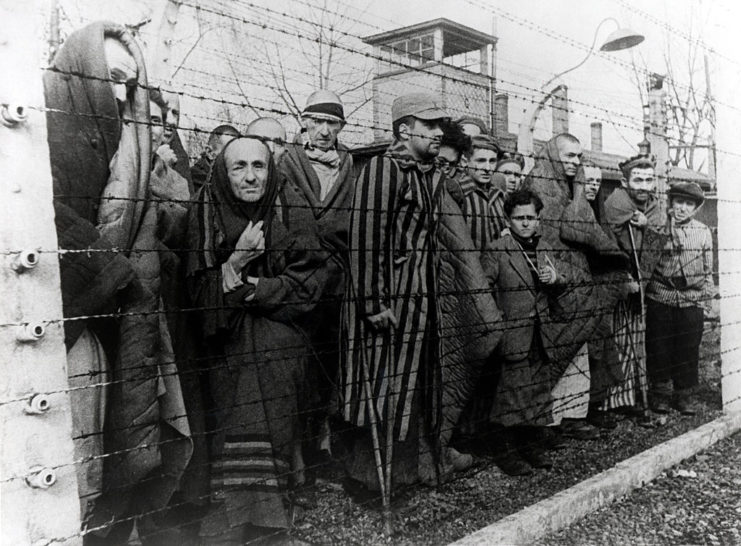
The Red Army troops continued their campaign against the Germans, their cause renewed after what they witnessed during the liberation of Auschwitz. They were quickly replaced by other soldiers, townsfolk and the Polish Red Cross, who set to work caring for the survivors.
The entire complex spanned over eight kilometers, a distance the nurses and doctors walked daily to get to their patients. They established medical care, clothing and proper food, as well as worked on documenting details about Auschwitz in numerous ways, including inviting journalists to the site. Soviet medics constructed two field hospitals – and the Red Cross, a third – to deal with the sheer need for medical care.
Remembering the victims
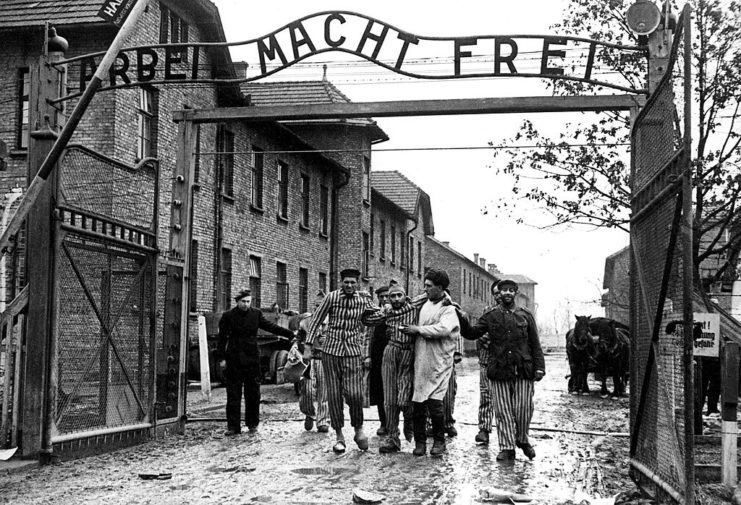
Despite a relatively large force working to rehabilitate and move those left at Auschwitz, by June 1945 there were still around 300 people who were simply too weak to be taken anywhere. Of the 9,000 who were left behind, the Red Army and the Polish Red Cross helped keep 7,500 alive.
Without the liberation early in 1945, this number would have undoubtedly been much lower. That doesn’t take away, however, from that fact that, throughout the war, 1.3 million people were sent to Auschwitz. Of that total, 1.1 million were murdered in the camps, with the few survivors being spread out among those who remained and those who survived the death march.
Among the Red Army, over 230 soldiers were killed in the process of liberating Auschwitz. Despite the camp’s infamy, it wasn’t always this way. Ironically, there was very little reported on its liberation when it occurred, despite it now being considered one of the symbols of the “Final Solution.” It wasn’t until the Western Allies did the same with other concentration camps that news of the Soviet role earlier in 1945 became popular knowledge.
More from us: Secretary Convicted of Complicity In 10,500 Concentration Camp Deaths
In the years that followed, January 27 became International Holocaust Remembrance Day. The former camp was converted into a museum by the Polish government and became a UNESCO World Heritage Site in 1979. Yearly, over two million people travel to the Auschwitz-Birkenau Memorial and Museum.
